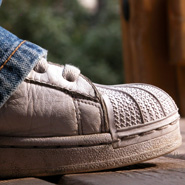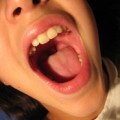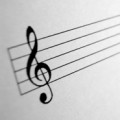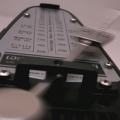This ‘Learn Music Faster’ series of posts highlights things my best students do that contributes towards their success. There are no secret formulae or magic tricks. Learning to play well still requires hard work, dedication and above all, practice. However, my students who do these things seem to improve quicker than the others.
Tap your foot
Students who learn to tap their foot to the underlying rhythm of whatever they are playing tend to pick it up quicker than those who don’t. This is especially the case if it involves a difficult or complicated rhythm.
I’ll say right at the outset that I know Classical teachers and players frown upon foot tapping. I’ll talk about this at the end. For now I am addressing ‘modern’ players, where foot tapping is common.
When we start out learning an instrument we tend to play simple rhythms that fall on the beat. These are fairly easy to keep track of. The music itself outlines the underlying pulse of the piece. However, as rhythms become more complicated, particularly with syncopation, triplets and semiquavers, it is easy to lose that pulse.
If the student has developed the ability to tap their foot independently to the pulse they tend to find it much easier to pick up these harder rhythms. The foot tapping grounds them in the beat, the framework which they can then ‘hang’ the rhythm on.
I have often found that students who can’t tap their foot while playing reach a level that they can’t go beyond – a ceiling level of rhythmic complexity. The only way to break through it is to go back to simple rhythms and re-learn them with foot tapping, ensuring that the student really understands the pulse going through the music. They usually find they can then master the more complicated rhythm, because they can understand how it interacts with that underlying beat.
Naturally this re-learning of simpler rhythms is frustrating for the student. It’s tough to do something that is normally easy but by adding the extra element of the foot tapping becomes complicated. So it’s far better to try to make foot tapping an habit right at the outset of learning rhythms, even if it means it takes a little longer to start with.
The other benefit of foot tapping, in the context of modern music, is that it tends to lead to better timekeeping and that ephemeral goal of ‘groove’ or ‘feel’. Modern / popular music tends to be beat driven. Having something that physically connects you and your playing to that beat will make your playing more precise and more a part of the overall sound and energy produced.
When I wrote this post I asked various friends about foot tapping in other genres. Jazz players tend to tap only on beats 2 and 4, often because the tempo is so fast that tapping on every beat would become tiring. Classical players look down on tapping. They emphasise ‘internalising’ the underlying rhythm of the piece without having to have external physical movement linked to it. I agree that this is a great thing to achieve, but as a teacher it’s very difficult to see. A reliable foot tap shows me that a student is feeling the rhythm properly, making it easier for me to identify and advise on learning points with any particular piece of music.
My advice, coming from the rock / pop point of view, is to get your foot tapping as early as you can. It will help you learn in the early stages. Then later, especially if you start playing more classical or unaccompanied styles, you may want to work on playing without tapping. You’ll probably find that this transition isn’t too hard as the tapping will have allowed you to internalise that sense of rhythm.
Previously on Learn Music Faster – Count In






Pingback: Learn Music Faster - Count In - Matt Helm Guitar